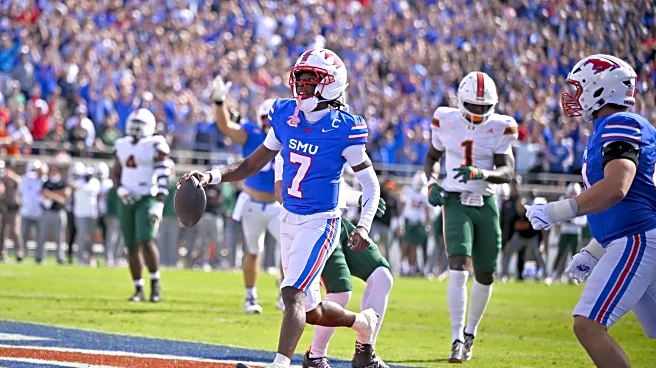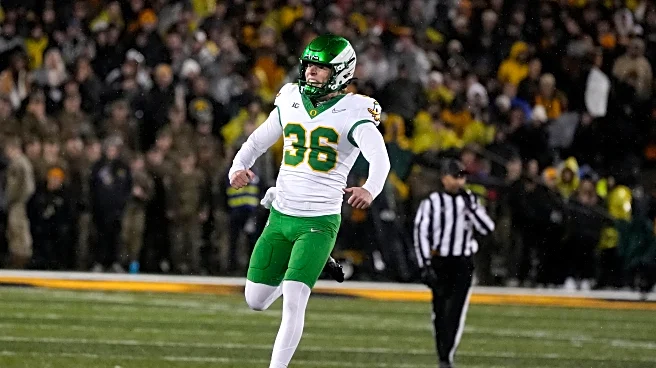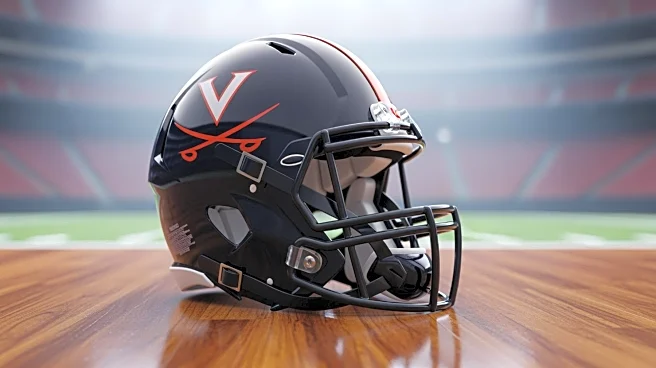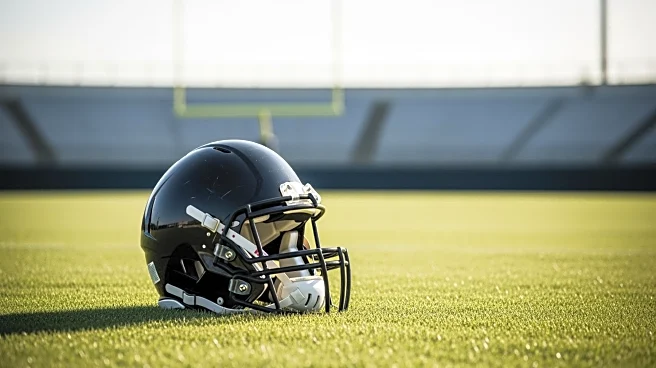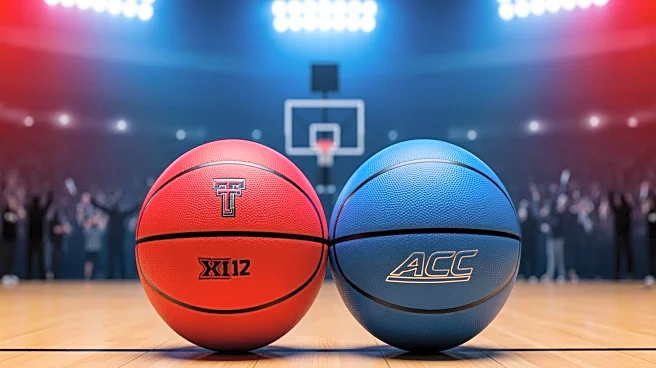What's Happening?
Virginia quarterback Chandler Morris was forced to leave the game against Wake Forest after sustaining a hit to the head during the second quarter. Morris was attempting to slide when he was sandwiched
between defenders, leading to his exit from the game. He was later seen on the sidelines in street clothes, indicating he would not return to play. Virginia's coach, Tony Elliott, mentioned that Morris would undergo further testing to assess his condition. Backup quarterback Daniel Kaelin stepped in but struggled to ignite the offense, completing 18-of-28 passes for 145 yards and losing two fumbles. Virginia's loss to Wake Forest ended their seven-game winning streak and marked their first defeat in ACC play.
Why It's Important?
The injury to Chandler Morris is significant as it impacts Virginia's quarterback depth and their position in the ACC standings. Morris has been a key player in Virginia's successful season, and his absence could affect the team's performance in upcoming games. The Cavaliers are now tied with four other teams in the ACC, making their next games crucial for maintaining their competitive edge. The situation also highlights the risks associated with player safety in football, particularly concerning head injuries, which can have long-term effects on athletes.
What's Next?
Virginia will be monitoring Chandler Morris's health closely, with further tests expected to determine his availability for future games. The Cavaliers are scheduled to play against Duke next Saturday, and Morris's status will be a critical factor in their preparation. Coach Tony Elliott and the team will need to strategize on how to adapt their gameplay if Morris is unable to return, potentially relying more on backup quarterback Daniel Kaelin.
Beyond the Headlines
The incident underscores the ongoing concerns about player safety in football, particularly regarding head injuries. It raises questions about the effectiveness of current protocols and the need for enhanced measures to protect players. The situation may prompt discussions within the ACC and broader college football community about improving safety standards and support for injured players.







